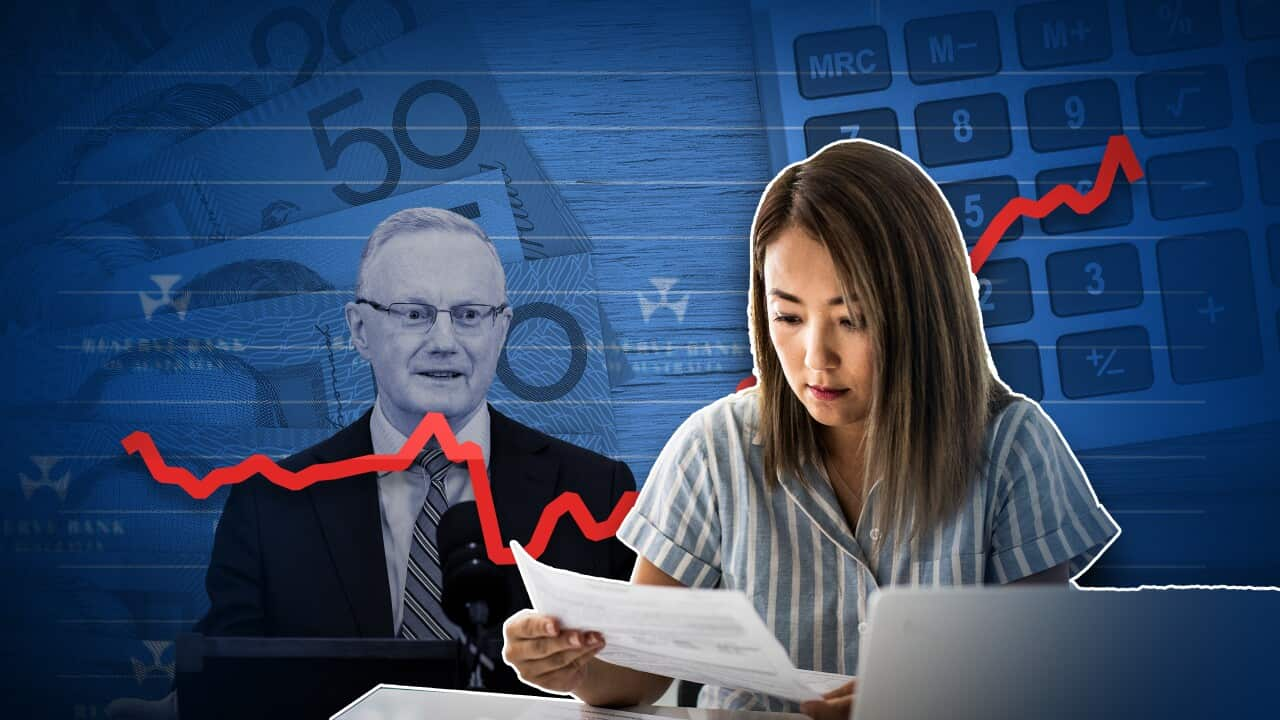Key Points
- The RBA wants to target sticky inflation and may raise interest rates to do so.
- Overall inflation is at 7 per cent, but some sectors have experienced higher price growth.
- The RBA expects inflation to fall back to 3 per cent by 2025.
Sticky inflation has nothing to do with sticky desserts - it’s simply inflation that sticks around, despite economic measures designed to force it down.
The March 2023 quarter figures released last week put annual inflation at 7 per cent, which is down from a high of 7.8 per cent in the December 2022 quarter.
“The worst of the inflationary pressures are behind us, but they will hang around higher than we'd like for longer than we'd like,” Treasurer Jim Chalmers said.
The treasurer hinted at the fact that there are several arms of the Australian economy experiencing sticky inflation, even though the Reserve Bank of Australia (RBA) raised interest rates 10 times in the last year, before pausing in April.
If the RBA decides to raise interest rates from the current level of 3.6 per cent when it meets on Tuesday, it will be taken as a sign that it is pushing even harder to get inflation down to its target of between 2 and 3 per cent.
Why is inflation likely to stay sticky?
“Sticky inflation is when a price should be going down but it isn’t and there’s often a reason why, and a group who has an incentive to keep prices high, such as the suppliers of goods,” economics professor at the University of New South Wales Gigi Foster said.
“The reason why we have these kinds of sticky prices generally has to do with the power of those suppliers. And the reason why this is a particular problem in Australia is because many of our industries feature a large degree of concentration of power, and are generally not freely competitive.”
Ms Foster used banking as an example of a low-competition sector, with the vast majority of Australians using four large banks.
Banks are able to keep their fees high enough to make, on average in a normal year, profits of up to 15 or 16 per cent.
The price of using their services then goes up because of real factors, which eventually begin to ease.
When the prices come down, the lack of competition means banks can more easily collude with each other and not bring prices back down as quickly as they could, she said.
Inflation is a particularly serious issue in the service sector of the economy, says AMP chief economist Shane Oliver.
"With services, inflation can be a bit slower moving and take longer to rise and can take longer to get back down again, and that's partly because of the effect of labour costs," he said.
Mr Oliver said that inflation has behaved differently in relation to goods, where prices went up around eight months ago, as a result of pandemic shortages of goods and the impact from the war on Ukraine, but they've largely started to fall again.
“So, in other words, they weren't very sticky, they went up and they'll come down.”
Medical and hospital services saw notably high increases in price, according to the March quarter figures, as did tertiary education, gas and other household fuels, and domestic holiday travel and accommodation.
When will sticky inflation ease?
The RBA expects inflation to fall back to 3 per cent by 2025.
Mr Oliver says he expects it to fall a little bit faster.
“It might get below 3 per cent through next year, as the economy slows down. But obviously there is a risk that it will go up or stick, and this is what the treasurer is referring to; inflation may take longer to come down,” he said.
Ms Foster says she wouldn’t be surprised if the RBA lifted interest rates again on Tuesday, to try and control consumer demand, which drives inflation.
“Everybody is kind of feeling a bit under siege. Economic actors are not feeling bullish or confident or wanting to experiment or invest long term and take risks,” she said.
“I think we are going to be in it for a little while yet."
Ms Foster said Australians need to remember that they can influence inflation as consumers.
"It's much more healthy to have confidence in yourself and, and take decisions that are going to be good for you and your family and try to look out for yourself and your community, instead of hoping that the government's going to ride in on a white horse.”
What are other countries doing about inflation?
Inflation in the US economy reached a peak of 9.1 per cent in June 2022, while new figures put it at 5 per cent in March 2023.
The reduction was reportedly achieved by raising the official interest rate, called the Fed funds rate from 0 to 4.75 per cent over the same period.
This is a bigger hike than the RBA has taken so far, and it's dampened demand and slowed economic activity more broadly, which has the effect of slowing inflation.
China, Hong Kong and Macau all have some of the lowest inflation rates in the world, but economists prefer to use other democracies for economic comparisons with Australia.
But looking over to Europe, Switzerland also has relatively low inflation, reaching a high point of 3.5 per cent in August 2022 and dropping to 2.9 per cent two months later.
It now sits at 3 per cent, thanks to a combination of factors including price controls, a more stable energy market than most other countries, wage restraints, and protection against import price inflation from the strong franc.
However, there are other factors that make comparison between Switzerland and other countries difficult, such as the high starting cost of items, and very high average salaries.




